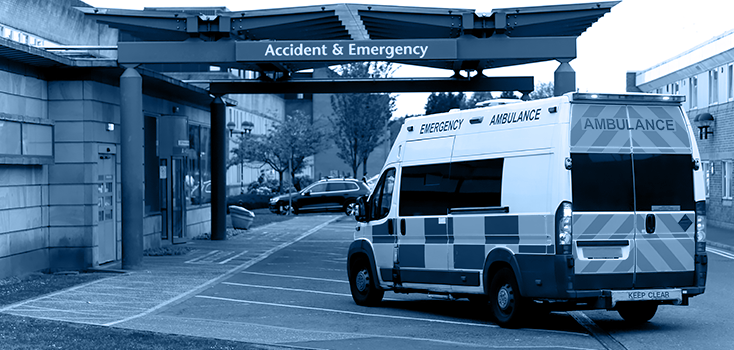
La Medicina d’Urgenza e il Pronto Soccorso. Ieri, oggi e domani. (Emergency Medicine. Yesterday, today and tomorrow) – Summary
Established after the Second World War, the San Camillo Hospital was characterised by a medical staff ready to operate in situations of emergency with all medical specialties. The reception area was initially and exclusively welcoming people in situation of chirurgic and traumatological emergency. While the admitting department had to respond to any other emergencies but not traumatological situations.
The casualty departments were fitted to host around 50 beds and at the beginning of the ‘70s already experienced the phenomenon of the additional beds, reaching a total of 75 beds. The establishment of an emergency-admitting unit in the San Camillo Hospital will only arrive later, at the end of the ‘70’s. However, with the increasing number of the patients, a new department for emergency medicine was built (MURG) which also included a unit of sub-intensive therapy (TSI) which was intended to deal with the critical cases that required infusional therapies.
In 2012 the TSI of MURG assisted 489 patients with a mortality rate upon 30 days equal to 23%. The patients visited in 2012 amounted to 61.453. Similarly, the red (priority) codes had an exponential growth as of 2007, due to the fact that San Camillo became the main HUB for chronic and acute syndrome, stroke and trauma. In this way, it became the only hospital and non-university centre in the emergency network.
Different analyses have shown how the phenomenon of overcrowding has been prevalent in the emergency units of the hospitals. Such data are based on the wait times that can count until 180 minutes for the red codes.
Having outlined the development of the San Camillo hospital and its emergency department, it is easy to understand which characteristics an emergency should have.
Ideally, the hospital should guarantee three levels of cares:
Level I: Intensive and semi-intensive care
Level II: Day-hospital (medical or chirurgical)
Level III: Post-acute intensive stare
In this way, a fair number of beds can be guaranteed as well as a prompt and immediate availability of cares.
Note: This short summary is based on the paper “La Medicina d’Urgenza e il Pronto Soccorso. Ieri, oggi e domani. (Emergency Medicine. Yesterday, today and tomorrow)”.
Author: AU – Guglielmelli, Emanuele. The Emergency Medicine. Yesterday, today and tomorrow. SALUTE E SOCIETÀ. 65-81. 10.3280/SES2014-002006EN.
Keywords
Emergency Room, Semintensive Care Unit, Emergency Department, Crowding, Differentiated intensity of hospital care, Bioethic.

